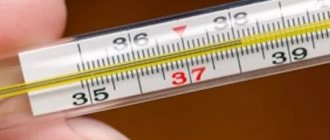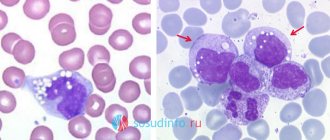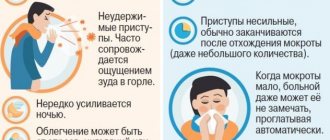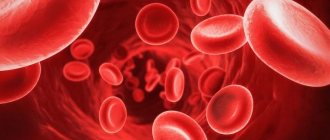What types of bleeding are there?
Bleeding can be triggered by external factors. They appear as a result of injury. Their nature is clear. In this case, it remains to find out the intensity of the lesion and provide first aid to the patient.
Spontaneous hemorrhages are of greatest concern. They begin suddenly without apparent external causes. They have varying degrees of intensity. May be episodic or regular.
Blood is released from the anterior and deep parts of the nose. When diagnosing, it is important to determine the location of the problem. Bleeding can be one-sided (left-sided, right-sided). Blood may flow from both nostrils at once. Unilateral bleeding is the least dangerous, as it indicates damage to the vessels of the anterior parts of the nose.
When describing a problem, take into account the frequency of its occurrence: single, rare, frequent. Indicate the duration of the process (short-term, long-term bleeding). Pay attention to the nature of the lesion: only capillaries or vessels and veins are affected.
Symptoms and signs of bleeding
More than half of cases of nosebleeds indicate that it comes as a complete surprise to a person, causing a feeling of fear and confusion. At the same time, it is important to be able to stop the bleeding in order to prevent significant loss.
Epistaxis is distinguished by the types and amount of blood released:
- Minor blood loss (from 1 to 10 ml at a time). Has virtually no effect on human well-being and health;
- The moderate type (10-200 ml) is characterized by weakness, the appearance of “floaters” before the eyes and a general loss of strength, while the skin and mucous membranes turn pale;
- Massive blood loss (about 300 ml). Blood does not flow out immediately, but gradually over time. In this case, weakness, dizziness, headache and tinnitus are also observed;
- Profuse blood loss (reaches critical values of 400-500 ml). It is characterized by more serious consequences in the form of short-term loss of consciousness, migraine-like headaches and a gradual drop in blood pressure.
Bleeding can be anterior and posterior (involving the front and back walls of the nose, respectively), as well as unilateral and bilateral (from one or two nostrils).
Blood loss from the anterior wall of the nose as a result of vascular damage is considered easier; posterior nosebleeds are difficult to stop without qualified medical care.
Danger of nosebleeds
The danger of periodic nosebleeds lies in the likelihood of developing iron deficiency anemia. With intense hemorrhages affecting large vessels, there is a risk of large blood loss.
Intense bleeding from both passages is considered dangerous. It indicates damage to the distant parts of the nose. This phenomenon is given special importance, because it is not possible to stop it at home. Such bleeding can be a consequence of severe pathologies.
The event indicates damage to the large vessels of the skull. Blood can be pumped into the nose through a common channel from the lungs, stomach and trachea.
Medical assistance
Adults and children with severe bleeding and significant blood loss are hospitalized in the ENT department. If you managed to quickly stop it at home, then the child should still be shown to an otolaryngologist and the adult should also consult a doctor. For frequent nosebleeds in children and adults, when no obvious cause can be found, you should be examined by a hematologist, endocrinologist, or neurologist.
Most often, blood flows from the Kisselbach area, to prevent new cases, this place is cauterized. The ENT doctor may do the following:
- remove polyps, foreign body
- posterior or anterior tamponade soaked in a 1% solution of feracryl, epsilon-aminocaproic acid, preserved amnion
- insert a tampon with vagotil or trichloroacetic acid to cauterize the vessel
- coagulation using one of the modern methods: electric current, laser, ultrasound, silver nitrate, liquid nitrogen, chromic acid or endoscopic cryodestruction
- it is possible to administer an oil solution of vitamin A, sclerosing drugs
- use a hemostatic sponge
- in case of severe blood loss, the use of fresh frozen plasma, donor blood transfusion, intravenous administration of hemodez, rheopolyglucin and aminocaproic acid are indicated
- if the above methods do not have an effect, surgical intervention is possible - embolization of large vessels (ligation) in the problem area of the nasal cavity
- prescribing drugs that increase blood clotting - vitamin C, calcium chloride, calcium gluconate, Vikasol.
After a nosebleed, it is not advisable to consume hot foods and drinks; you should not exercise for several days, as this promotes a rush of blood to the head and can provoke a recurrence.
Causes of nosebleeds under normal conditions
Common causes of nosebleeds in adults include a deviated nasal septum. This factor affects the redistribution of air flows, as a result of which dryness, irritation, and swelling of the mucous membrane occur in one of the passages. All this provokes the appearance of nasal congestion and fragility of the walls of small capillaries.
Bleeding can be caused by external factors. Dry and cold air can provoke the appearance of microtraumas on the internal capillary network of the nose. Bleeding often occurs against the background of dry mucosa.
In men
Men are characterized by the presence of factors common to both sexes.
Changes in capillary permeability are associated with cardiovascular disease. Atherosclerosis is one of the causes of decreased vascular elasticity. This disease is also accompanied by frequent manifestations of hypertension.
Bleeding may be a consequence of changes in blood clotting. This pathology is often accompanied by bleeding gums.
Sometimes specific factors are present. In some professions (divers, climbers, aircraft pilots), activities are associated with a sharp change in the pressure acting on the body. At some point, the walls of blood vessels may not be able to cope with the impact exerted on them.
Frequent bleeding occurs due to kidney and liver diseases. Pathologies of internal organs contribute to the development of hypertension, which will be the main cause of epistaxis.
The fragility of blood vessels increases as a result of taking certain medications. Drugs that reduce blood viscosity increase capillary permeability.
The causes of nosebleeds may lie in genetic abnormalities, such as hemophilia.
Sometimes the only factor is age. Due to changes that occur in older people, the walls of the vessels in the distant parts of the nose lose their elasticity. The result is bleeding from the deep parts of the respiratory organ.
Among women
In women, the factor of menopause is added to the reasons. In conditions of falling hormonal levels, the elasticity and permeability of blood vessels is impaired.
During pregnancy
Women in the first trimester of pregnancy are at particular risk. With an increase in the total level of estrogen, the filling of the vascular network with blood increases. Intercellular fluid tends to linger, which leads to swelling and fragility of the nasal mucosa in particular.
From the second trimester of pregnancy, the appearance of bleeding may be associated with a deficiency of certain substances, due to which background pathologies develop.
During pregnancy, the load on the cardiovascular system increases significantly. Women often suffer from high blood pressure, which is also a factor contributing to the appearance of epistaxis.
Rare events do not threaten the mother and fetus. A woman should definitely draw the attention of a leading doctor to intense bleeding.
Diseases of the body as a cause of nosebleeds
In some cases, it is not easy to establish the cause of repeated attacks in an adult, especially if the disease is hidden deep in the body.
Hypertonic disease
Most adults over the age of forty have high blood pressure. An increase in blood pressure at the onset of the disease is felt by tinnitus and headaches. However, people with thin nasal vessel walls often experience bleeding. Repeated negative symptoms are a reason to measure your blood pressure.
Hypertension is a serious pathology that affects the entire body.
Secondary arterial hypertension
High blood pressure is not always a consequence of hypertension. Vascular tension is regulated by many factors. The most important role is played by the substance angiotensin, secreted by the kidneys. Any disruption of their work - inflammation (pyelonephritis, glomerulonephritis) or blood deficiency due to cholesterol plaques in the renal vessels leads to increased blood pressure. In addition, the tone of the vascular wall is regulated by hormones: aldosterone, thyroxine, vasopressin, adrenaline, norepinephrine, cortisol. An uncontrolled increase in their production also leads to an increase in blood pressure. Before concluding that hypertension is present, other possible factors must be excluded.
Narrowing of the renal artery is the cause of secondary arterial hypertension
Rondu-Osler disease
Another cause of recurring episodes of nosebleeds is a rare hereditary vascular disease - Rondu-Osler syndrome. Normally, the vascular wall is quite strong and consists of three layers: internal intima, muscular media and external connective tissue adventitia. The hereditary disease leads to a congenital defect in the structure of the vascular bed: the absence of the middle and outer membranes. Such vessels are very thin, and therefore a slight impact can lead to heavy nosebleeds.
Rondu-Osler disease is a congenital defect of the vascular wall.
Systemic vasculitis
The cause of nosebleeds can be diseases that cause inflammation of the vascular wall - vasculitis. Most of them are based on immune aggression against one’s own tissues and organs, including blood vessels. Such pathologies include:
- giant cell temporal aortoarteritis;
- aortoarteritis;
- Tokayasu disease;
- Wegener's granulomatosis;
Wegener's granulomatosis is a systemic vascular disease
- Charge-Strauss syndrome;
- Kawasaki disease;
- microscopic polyangiitis;
- periarteritis nodosa.
All these diseases lead to a decrease in the strength of the vascular wall, which causes nosebleeds. Pathology requires confirmation - a histological examination of a tissue sample of the nasal cavity.
Hematopoietic diseases
Hematopoietic diseases are another possible cause of frequent nosebleeds. Blood cells - leukocytes, erythrocytes, platelets - are formed in the red bone marrow, undergoing several successive transformations. Any disruption to these processes can lead to repeated episodes. The disease can affect only one part of hematopoiesis - the formation of red blood cells, leukocytes or platelets. Such pathologies include:
- anemia (anemia);
- malignant tumor of the white line of the bone marrow - leukemia;
Leukemia is a malignant tumor of the red bone marrow
- myeloma is a tumor of a certain type of white blood cells;
- thrombocytopenia is a disease in which insufficient blood platelets - platelets - are formed in the bone marrow.
To confirm the hematopoietic disease, a complete blood count and microscopic examination of a bone marrow sample taken by puncture of the sternum is required.
Liver diseases
The liver is an extremely important part of the human body. It performs many different functions. Not least among them is the formation of substances that help blood clot. Chronic inflammation in the liver (hepatitis), proliferation of connective tissue (cirrhosis) inevitably leads to disruption of this process. A deficiency of blood clotting factors can manifest itself not only in nosebleeds, but also in skin hematomas or internal hemorrhages. Confirmation of liver disease requires a comprehensive examination using analysis, ultrasound, and tomography.
Cirrhosis of the liver leads to total dysfunction of the organ
Infectious diseases
Nosebleeds often occur against the background of a general infectious disease. A particularly common cause is influenza, a severe viral pathology. The pathogen, penetrating the body, releases specific toxins. As a result, the integrity of the vascular wall is disrupted not only in the nasal cavity, but throughout the body, including the brain. In addition, the pathological process can cause not only nosebleeds. Areas of hemorrhage along the vessels, located throughout the body, pose a great danger. Currently, the diagnosis of influenza requires laboratory confirmation.
The influenza virus affects blood vessels
Other factors
The phenomenon can develop in a healthy body in the absence of any diseases. Its development can be facilitated by sudden changes in atmospheric pressure. At an altitude of more than 2 thousand meters above sea level, the air pressure is much lower than what residents of flat areas are accustomed to. Being in the mountains, especially for the first time, can cause not only symptoms of oxygen deprivation, but also repeated nosebleeds.
An increase in body temperature can also cause a problem. However, the cause of such changes is not always illness. An increase in body temperature may be a consequence of sunstroke or heatstroke, which occurs during prolonged exposure to a stuffy room, bathhouse, sauna, or under the scorching sun.
Another factor is a foreign object in the nasal cavity. Most often, a child finds himself in such a situation. Open access to small objects - coins, buttons, parts of toys, combined with children's curiosity, becomes the main predisposing factor.
Foreign body in the nasal cavity is more common in children
The time of occurrence of nosebleeds may indirectly indicate the cause of the negative symptom. Evening is a period of increased blood pressure. Many brain hemorrhages occur in the afternoon hours. Blood from the nose in the morning often indicates changes in the nasal cavity.
Why does it go in the mornings and evenings?
Constant stay in a room with a hot climate leads to the appearance of signs of dry rhinitis. The overdried nasal mucosa is easily injured. The presence of negative factors throughout the day can provoke the appearance of epistaxis in the evening.
Frequent use of vasoconstrictor drugs results in degradation of the nasal mucosa. The disease is called atrophic rhinitis. A thinned vascular wall is fragile. Morning bleeding occurs even from slight blowing of the nose.
Why does an adult bleed from the nasal cavity?
Why does my nose bleed every day? The reasons why blood appears or flows for several days in a row may be different. The two main ones are mechanical damage and internal processes in the human body. You can take a closer look at the causes of such bleeding in an adult and find out what should be done in certain cases.
Trauma – Nose injuries most often occur as a result of a strong blow to the face. Such blows often lead to a fracture of the nasal septum, which contributes to blood loss. Children often break the mucous membrane themselves when they pick their nose with their fingers, so you should wean them off this bad habit.
- External factors. Bleeding may occur due to overheating in the sun or due to severe physical exertion. Such bleeding should not worry you, since it is a consequence of unfavorable conditions.
- Sunstroke. In summer, nasal hemorrhages are quite common. This is due to the fact that due to the heat, the nasal mucosa dries out, which leads to rupture of blood vessels. It’s not for nothing that doctors recommend staying in the shade more and wearing hats. These simple steps can protect you from the unpleasant effects of heat.
- Drying of the mucous membrane. It's not just heat that can dry out your mucous membranes. This can also happen in severe frost or in a room where the air is too dry.
You may be interested in: Severe nosebleeds in men and women
Such nosebleeds are not a serious cause for concern. More serious cases that require your attention and medical supervision will be listed below
- Hypertension. As you know, hypertension is characterized by increased blood and intracranial pressure. This causes the capillaries to burst and the nose to bleed. Sometimes it even saves some people from having a stroke. This most often occurs at night or between 4 and 6 am.
- Rhinitis. With diseases of the nasal cavity, the walls of blood vessels weaken, which leads to their ruptures. But the cause of blood loss can be not only diseases, but also various bacteria, for example, staphylococci.
- Papillomas in the nose. Papillomas are found not only in the nose and are various growths that can cause malignant tumors. Nasal polyps put pressure on the blood vessels, making breathing difficult and causing bleeding.
- VSD - one of the signs of vegetative-vascular dystonia is the fragility of blood vessels, which, as is known, leads to the appearance of blood from the nose.
- Atherosclerosis. Can be compared with VSD. Here, too, fragile vessels provoke hemorrhages.
- Pheochromocytoma is a tumor that occurs on the adrenal glands and increases the level of stress hormones in the patient’s body. This, in turn, increases blood pressure, which has an effect on the vessels of the nose. If your nose bleeds frequently and your nose is constantly dry, this may indicate the presence of this tumor. Don't put off going to see a specialist.
- Taking medications. While curing us from some diseases, some medications can cause side effects. Nosebleeds can be caused by medications that prevent blood clotting, as well as various nasal sprays that dry out the nasal lining.
- Oncological diseases. In the presence of tumors in the nose, epistaxis may occur. Usually, in addition to this, swelling of the nose and small ulcers inside are observed.
- Hemophilia and other diseases that impair blood clotting can cause epistaxis.
- Vitamin C deficiency: Nasal hemorrhages are often caused by a deficiency of vitamin C in the body. After all, it is this vitamin that is responsible for the density of the walls of blood vessels.
You may be interested in: How to rinse the nose with saline for adults and children
These are the main reasons why blood bleeds. In all these cases, you should consult a doctor. But children's and adults' blood loss is slightly different, so next we should consider why children bleed from the nose .
- This may be due to the fact that the vessels and nasal mucosa are not yet formed.
- The air in the room where the child spends time is too dry.
- Impacts during games, damage to the mucous membrane as a result of the child picking his nose with his finger.
- Young children often put various small objects into their noses, which damage the mucous membrane.
- Nasal sprays, the action of which is aimed at narrowing blood vessels.
- Severe tension when the child tries to sneeze or cough.
- Formation of polyps or tumors in the nasal cavity.
- Anemia or vitamin deficiency is more common in autumn and spring.
- Various viral and bacterial diseases.
- Hormonal surges during puberty.
The causes of epistaxis in children are most often associated with age and disappear as they grow older. But this is not a reason not to pay attention to it. Tumors, high blood pressure and other diseases in children have not yet been canceled. The misconception is that angina is the cause of epistaxis.
How can you stop nosebleeds?
When dealing with nosebleeds, you need to follow the general rules:
- take a sitting position with your head slightly thrown back;
- With two fingers, pinch the bridge of your nose for 10 minutes; during this time the blood will have time to clot, the resulting film will block the crack in the vessel from which the blood flows; breathing through the mouth should be free;
- use a cotton swab soaked in hydrogen peroxide or apple cider vinegar; the tampon is inserted in one or both strokes; after the bleeding has stopped, you should not blow your nose or take sharp breaths through your nose for two hours; you should try to refrain from sneezing;
- periodically press a cold compress to the bridge of your nose, which can be made from any piece of cloth soaked in ice water;
- if the blood is coming from only one side, you can raise the corresponding arm up.
If the bleeding is very intense, then after providing first aid, you need to call a team of doctors.
Treatment with traditional medicine
When treating one-time, mild bleeding, doctors allow the use of traditional medicine.
The following drugs are safe to stop bleeding:
- Nettle juice. Has a hemostatic effect. To do this, it is recommended to moisten a gauze turunda with it and carefully insert it into the nose.
- Lemon juice. Helps quickly stop bleeding. It is well tolerated even by small children. To do this, the juice, strained from the pulp, is instilled into the nostril using a pipette. For an adult, 3 drops are enough.
- Kalina. If nosebleeds occur due to high blood pressure, you should take viburnum juice diluted with warm water inside. This will help reduce blood pressure quickly. Pure juice can additionally be dripped into the nose to stop bleeding.
- Millennium. A decoction of this plant is dropped into the nose.
Prevention
As a preventative measure, it is necessary to identify and establish the cause of bleeding. Cure the underlying disease.
If the reason lies in taking medications, you should inform your doctor.
To prevent bleeding, aggravating factors must be eliminated. Avoid frequent use of vasoconstrictor drugs. Humidify the air in the room. When staying outside in the cold, cover your nose with a scarf or hand.
It turns out that the phenomenon of epistaxis can also occur in a practically healthy adult. But to be sure that there is no threat, it is necessary to establish the exact reason why the nose is bleeding.
Kinds
The main reason for the appearance of blood from the nasal sinus is a violation of the integrity of the walls of capillaries and vessels, which are found in large quantities under the mucous membrane in the nose. Blood enters the nasal capillaries directly from the aorta. In some people, the vessels of the nasal sinuses have a very thin wall structure and even with very little pressure on them, for example, during a runny nose, they can constantly rupture, which causes frequent nosebleeds.
Types of nosebleeds and their significance in the diagnosis of various diseases:
- Caused by minor mechanical damage to the inner walls of the nasal sinuses, or due to pressure surges. As a rule, such bleeding is scanty and stops quickly. It is not a symptom of severe pathologies in the body or diseases. People with weak mucous membranes in the nose may very often experience minor bleeding in the area.
- If nosebleeds are rare, short-lived and scanty, this is one of the most normal phenomena, which is characterized by the release of blood from the body. The reason for their appearance is the shallow location of the vascular network under the mucous membrane.
- Heavy bleeding from the sinuses, which does not stop on its own for a long time, is a dangerous symptom. In some cases, severe bleeding can cause death.
Liver disease and alcoholism
The fourth most common cause of nosebleeds is liver pathology. In some diseases of the hepatobiliary system, the ability of the blood to form thrombosis is reduced, the walls of the blood capillaries become thinner, the vessels dilate and experience increased pressure. The most common cause of such bleeding in our country is alcoholic liver disease.
According to legend, the greatest warrior Attila, the leader of the Huns, died from a nosebleed. Probably, his death was caused by excessive drunkenness, which caused profuse hemorrhage from the vessels of the nasal cavity. According to the description of the Byzantine historian Priscus of Panius, Attila died at night, choking on his own blood. The day before he celebrated his own wedding and was very drunk.
Causes and risk factors for nosebleeds in children
There is a huge variety of causes that lead to bleeding from the nasal passages. Our nose has a rich blood supply from the branches of the external and internal carotid arteries (the largest artery is the sphenopalatine branch).
In children, the nasal mucosa is extremely delicate and very easily injured. It is enough to “pick” your nose to provoke bleeding. The most common cause is foreign bodies (toys, coins, buttons and anything that a child can put in his nose). Next come:
- nasal injuries;
- acute respiratory viral infections (viruses can affect the walls of blood vessels), influenza;
- drying out of the mucous membrane of the nose and nasopharynx (long stay in a poorly ventilated, too hot room);
- nutritional factor (malnutrition and, as a consequence, deficiency of vitamins, proteins and other substances necessary for the construction of blood vessels).
Diagnostics
To determine the location of nosebleeds, an otolaryngologist examines the nasal cavity using a special rhinoscope device - anterior rhinoscopy and posterior rhinopharyngoscopy.
With posterior nosebleeds, it is very important to differentiate it from gastric and pulmonary, in which the patient also experiences hematemesis and hemoptysis. Upon visual examination, nasal blood has a bright red saturated color, while with gastric blood it has the shade of coffee grounds, and with pulmonary blood it has a bright scarlet color with foam (pulmonary air bubbles). It should be borne in mind that profuse posterior nasal bleeding may be accompanied by vomiting and hemoptysis, which is caused by blood flowing down the oropharynx.
To determine the severity of blood loss and diagnose the main cause of nosebleeds, a number of additional studies are performed on the patient, including general and detailed blood tests, as well as a coagulogram. Based on the results of the study, the doctor prescribes adequate treatment.
Treatment
If the bleeding cannot be stopped by pressing the wings of the nose with fingers or tamponade, the following procedures may be necessary:
- Electrocoagulation (“sealing” of blood vessels using electric current).
- Chemical cauterization of blood vessels.
For severe nosebleeds that cannot be eliminated with conservative methods, surgical intervention is performed. The operation is also prescribed if the bleeding is caused by pathologies of the nasal septum - to prevent relapses.
To avoid relapse, it is important to eliminate the cause of the violations. If it is a blood clotting disorder, then hemostatics are prescribed - drugs that increase clotting. If bleeding is caused by vitamin deficiency, the doctor selects vitamin and mineral complexes. If necessary, the patient is referred to a specialist: cardiologist, endocrinologist, urologist, etc.
Definition of the concept
Nosebleeds are the leakage of blood from blood vessels located in the anterior or posterior parts of the nasal cavity. In medical practice, the term epistaxis is equivalent to nosebleeds. They can occur at any age and are a common ENT pathology (from 4 to 11% in the structure of diseases of the ENT organs).
How to deal with epistaxis
Fighting epistaxis as a symptom of a disease makes no sense. If you experience frequent nosebleeds, consult your doctor immediately. A therapist (or pediatrician, if we are talking about a child), as well as an otolaryngologist, can help you in this matter. Typically, diagnosis is limited to a general blood test and checking blood clotting parameters.
Many people are accustomed to thinking that epistaxis does not mean anything serious, but people are often deeply mistaken. If this symptom bothers you frequently and is not a consequence of mechanical damage, then you should think twice and consult a doctor as soon as possible.
You may be interested in: Causes of bloody snot in adults
First aid for nosebleeds
First aid for nosebleeds is a list of simple actions that will help stop the bleeding and make sure that subsequent medical intervention is not required. If you see a person bleeding, you must immediately firmly press the wings of his nose with your fingers and tilt his head a little forward. This way you will squeeze the bleeding vessel.
Do you have ice on hand? Great! It will help you treat nosebleeds. Place it in a regular plastic bag and press it tightly to the bridge of your nose. You can replace the ice with a napkin soaked in very cold water or a cool metal object.
Is the blood still flowing? Then you will need a regular medical bandage to provide emergency treatment for nosebleeds. It is necessary to plug the nasal passage. Just fold it into a tube, tucking the edges in well, and insert it into the bleeding half of the nose.
If such first aid for nosebleeds does not help, then you must take a tablet of any hemostatic agent. It could be Vikasol or Dicynon and contact an ambulance.
What should you not do if you have a nosebleed?
Please note that first aid for nosebleeds must be provided without fail. But you should never:
- Blowing your nose
can cause even more bleeding, since blowing your nose will cause the clot that has formed to come off. - Throw your head back
- in this position, blood from the nose will immediately begin to flow down the back wall of the throat directly into the esophagus. - Pack the nasal passages with cotton
- it is incredibly difficult to remove after the bleeding has completely stopped.
If you see that a child has a nosebleed, do not rush to immediately provide the same assistance as adults. Most often in babies this happens due to the fact that they breathe dry air, blow their nose a lot, or simply pick their nose with their fingers. Just calm your child down and ask him to lean forward for 5-10 minutes. This should help.
https://womanadvice.ru/nosovoe-krovotechenie-pervaya-pomoshch











